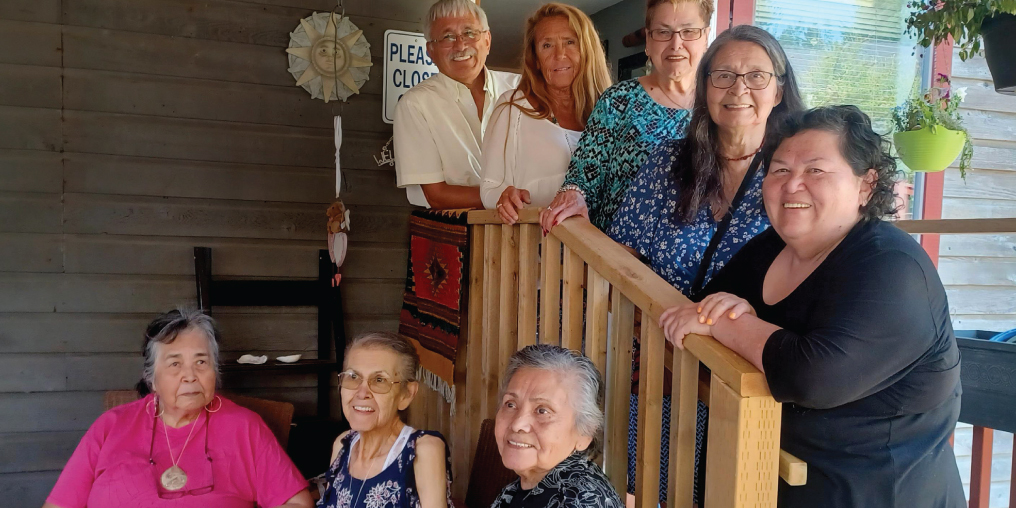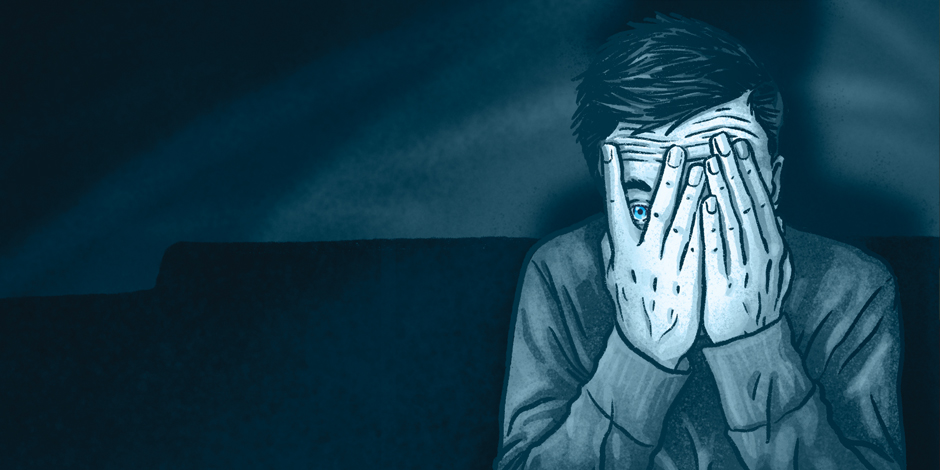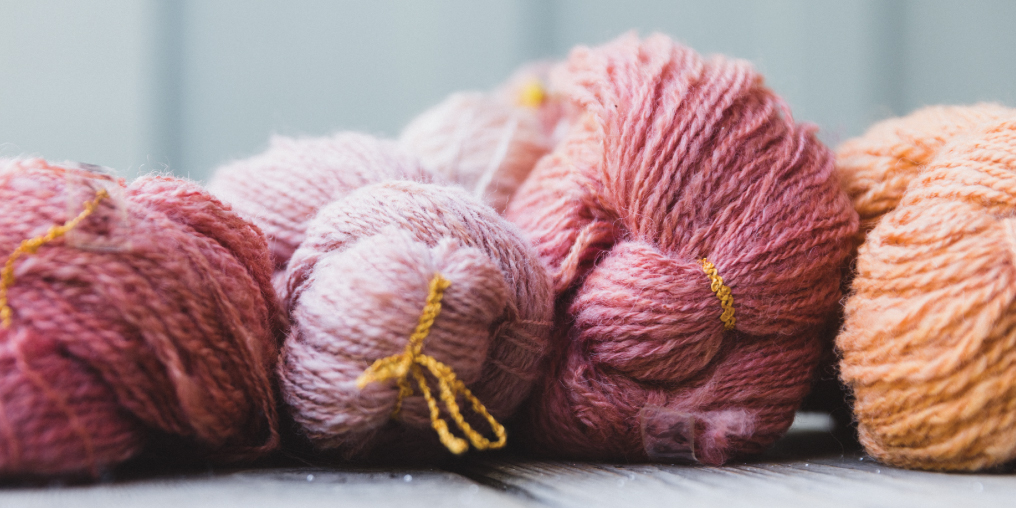PHOTOS BY GWEN MONNET, SANDI PHYE, & CRAIG SOROCHAN
We respectfully acknowledge that the land we gather on is on the unceded traditional territory of the K’ómoks First Nation, the traditional keepers of this land.
The Elders in Residence program, named Ni’nox¯sola (a Kwak’wala word meaning Wise Ones) first began in 2017 as an Elders’ advisory made up of respected members of our Indigenous community. Mary Everson, Evelyn Voyageur, Edna Leask, and Bryce Mercredi agreed to develop a program that would support inviting Elders into local schools.
Over the next year, with the participation of District Principal of Indigenous Education Bruce Carlos and Gwen Monnet as project coordinator, the team met to discuss the goals and objectives of this pilot project. We studied Elders’ programs from other communities, provinces and even countries for ideas and inspiration.
One thing that stood out is that our Indigenous students are a remarkably diverse group, with origins spanning across Canada. The team wished to recognize and honour our local First Nations people but also the diversity of all Indigenous groups that call the Comox Valley home.
The Ni’nox¯sola program that emerged is a creation unique to the Comox Valley—developed within Indigenous education with members of our Indigenous community. In 2019, it was launched in several local schools.
It is important to note that the Kwak’wala word Ni’nox¯sola (Nee nox so la) denotes the name of the program and is not a title that is used for our individual members. Our Elders use names/titles from their communities of origin.
The program has two main goals: to prioritize relationships between students, staff, and Elders, and to build bonds that lead to a deeper respect for Indigenous peoples and culture. It provides cultural perspectives and promotes inter-generational relationships for students in our schools.
The Elders in Residence provide calm, wisdom, and cultural strength by connecting through stories and sharing traditions with the students and staff on their visits to host schools. The Elders say they get as much out of it as the students do—they just love being with the kids.
Like the students, the Ni’nox¯sola team members have diverse backgrounds, and each Elder brings unique strengths and gifts. Every week, 11 Valley schools receive visits from their Elder/Knowledge Keeper, who while participating in activities with the students, shares perspective and knowledge about his or her own life, experiences, and traditions. Some Elders visit more than one school per week.
Our program greatly appreciates the teachers and administrators who are willing to adapt their classrooms and schedules to accommodate our Elders, and for the Indigenous Support Workers who assist in facilitating their visits. At one of the high schools, for one full day a month, students are given the opportunity to learn cedar bark weaving alongside their Elder on a drop-in basis. In other schools, the Elders share teachings and language; they also enhance activities like nature walks, crafts, writing and sharing stories, beading, baking, and drumming. Above all, they are there for the students who need a quiet moment, a gentle ear, and a calming presence.
Six years into the program, we’re already seeing its benefits. By sharing traditional cultural practices and ways of being with students of all backgrounds, these Elders encourage pride in Indigenous identity and a greater understanding of Indigenous world views.
Every year, we receive glowing words of encouragement and invitations from other schools for Knowledge Keepers to join their school community. We would love to see the day when every school can experience the wisdom of an Elder in Residence.
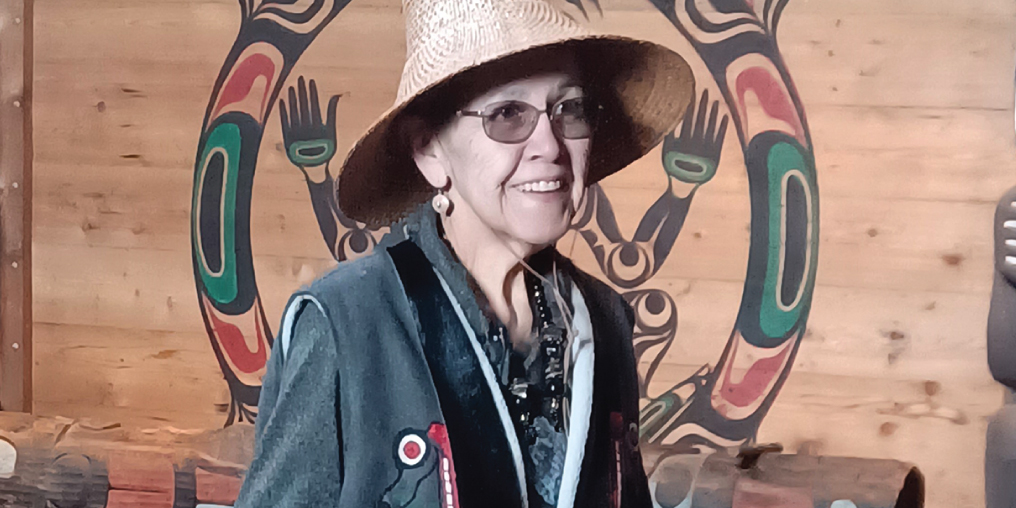
MARY EVERSON
Mary Everson, U’maga¯lis, was of Pentlatch and Kwagiulth origins and a member of the K’ómoks First Nation. Mary grew up in the Comox Valley where her childhood was steeped in tradition through the teachings of her parents, Margaret and Andy Frank. With her knowledge of culture and history, Mary was instrumental in providing us with insight into how to achieve our goals in a good way on this territory. She was a fluent Kwak’wala speaker and a master of the oral traditions of her people. Mary crossed over to the spirit world in July of this year. Her generous spirit and welcoming heart will live on through the many lives she touched.
Dr. Evelyn Voyageur, from the Musgamagwx Dzawada’nuxw, was born in Knight Inlet, BC. Despite attending St. Michael’s Residential School in Alert Bay, she is fluent in her language, Kwak’wala. She is an active matriarch in the Kwakwaka’wakw culture and traditions. At GP Vanier Senior Secondary School, where she is known as “G¯aga¯s” (Grandmother), students come to greet her arrival and ensure she is comfortable while in the school. Evelyn is known to hold discussions on the impact that residential schools have had on Indigenous populations. She also facilitates cedar weaving workshops with the students.
Edna Leask is Tlingit, Tagish, and Tutchone. Born in the Yukon, she has lived in the Comox Valley for 30 years. Edna loves to share the rich stories of her upbringing and the teachings of caring, sharing, teaching, and respect that she learned from her parents.
She and the students of Aspen Park Elementary enjoy lunchtime beading circles together, as well as stories and crafting in small groups. Mrs. Leask also takes pleasure in spending time with the high school students at Nala’atsi School.
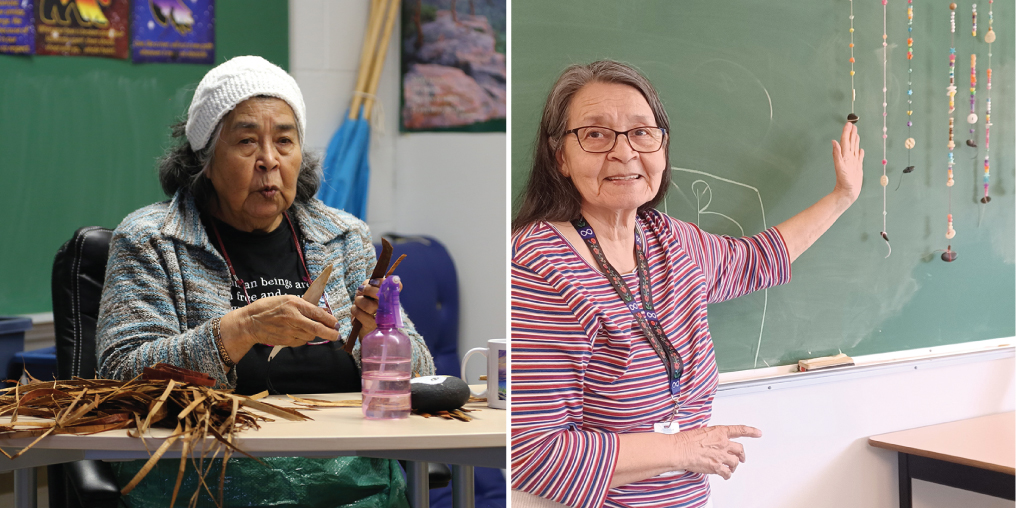
LEFT: EVELYN VOYAGEUR RIGHT: EDNA LEASK
Bryce Mercredi is Metis; generations of his family worked in the fur trade and the Hudson’s Bay Company in Fort Chipewyan. Many of his tales of the great white north spawn from his childhood in Yellowknife. He has been involved in providing a voice for and building the Metis community for over 30 years. Mooshum (grandfather) Bryce is popular in the classrooms of Queneesh Elementary School, where he shares his vast knowledge of Metis history. He believes in getting out on the land and accompanies classes on field trips to share his knowledge of the environment.
Sheila Buchanan speaks the languages from her childhood Metis community of Lac la Biche, Alberta: Cree, Michif, English, and a little French. Every week, Kookum (Grandmother) Sheila visits Arden Elementary, Courtenay Elementary, and Glacier View Secondary. She is celebrated for her bannock (fry bread) and has been known to cook up over 300 pieces to serve the entire school! You can also find Kookum teaching jigging (Metis dance) to groups of students, making traps, or spending valuable one-on-one time with students.
JoAnn Restoule, Bedoos-Kadoo, is a member of the Dokis First Nation, belonging to the Anishnabe people. JoAnn shares her rich cultural heritage with Mark Isfeld and Highland secondary schools. Culture, spirituality, art, theatre, song, and dance have played a significant role in her life. JoAnn lends her knowledge to leadership and girls’ groups, facilitating teachings of jingle dancing, sweat lodges, ribbon skirts, drum making, and smudging, to name but a few.
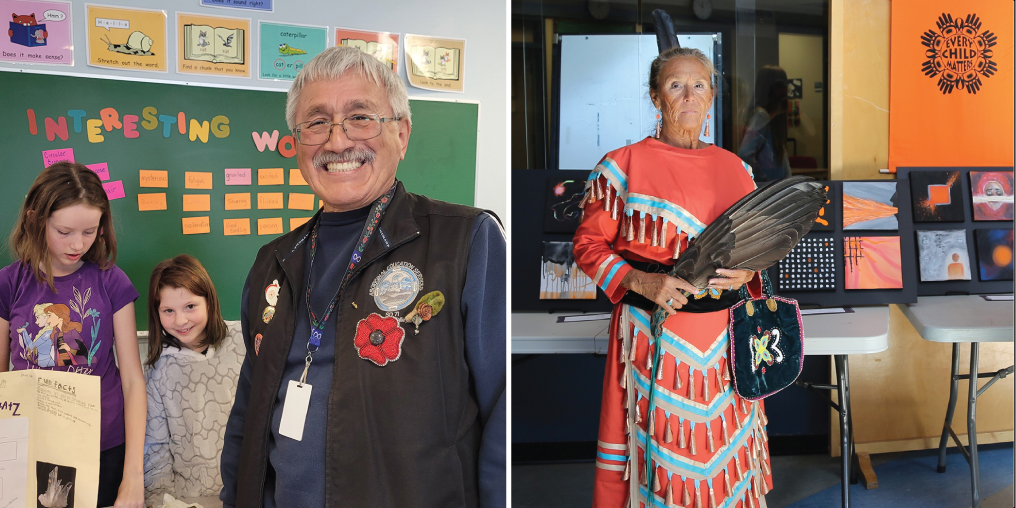
LEFT: BRYCE MERCREDI RIGHT: JOANN RESTOULE
Annie Joseph is Musgamagw Dzawada’enuxw from Kingcome Inlet, where she was fortunate to experience a traditional way of life for twenty years. A fluent speaker and teacher of Kwak’wala, she enjoys spending time at École Puntledge Park Elementary School, where the students know her as “Ahda Annie” and gather around her to learn Kwak’wala words. Annie enjoys watching the children craft and work, and they are always proud to show her what they have accomplished.
Ramona Johnson, Ts’a Tsi li dza¯m g¸a and K’alam’alaga, was born in the Comox Valley and is a member of the K’ómoks First Nation. “Auntie Mona,” our most recent member, has been involved with both École Robb Road and Airport Elementary. She enjoys participating in teachings of the K’ómoks and using her connections among the local people to enhance the students’ learning experience.

